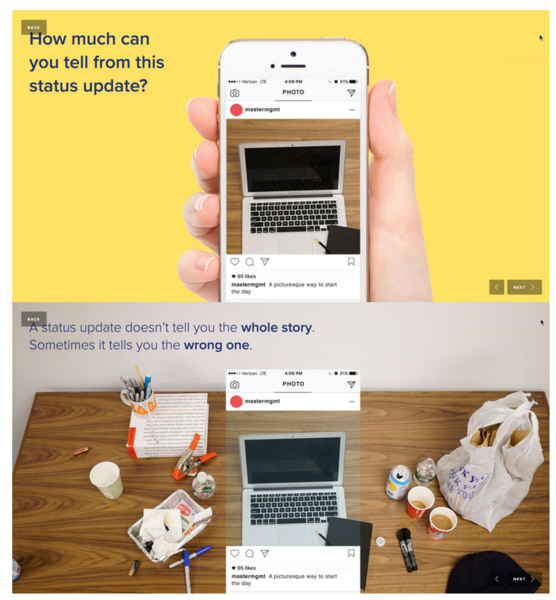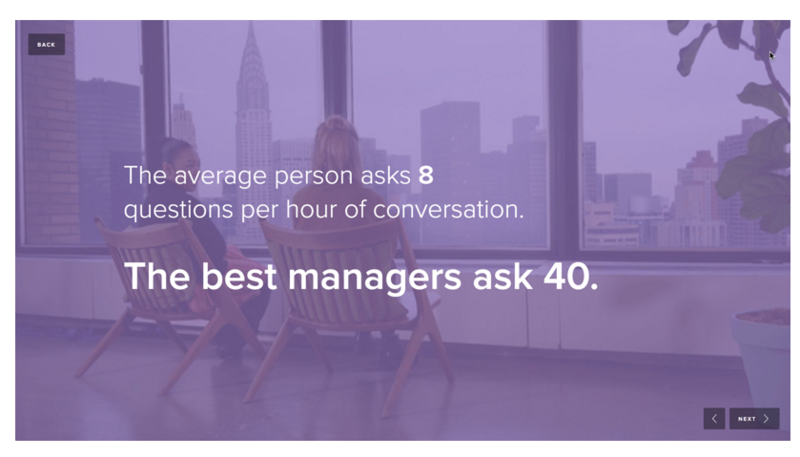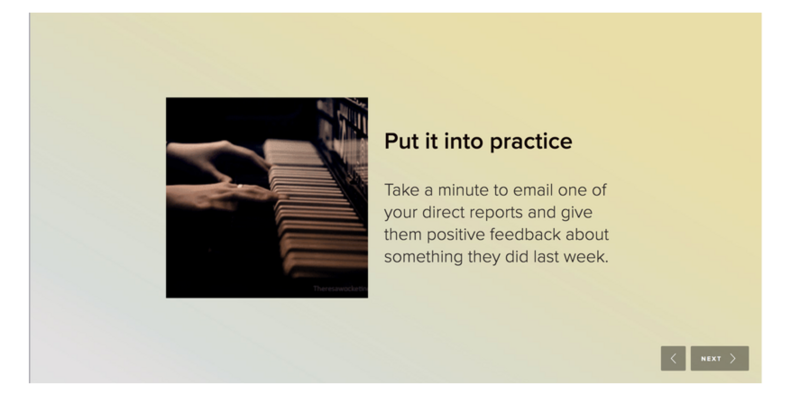ATD Blog
5 Rules for Successful Microlearning
Wed Sep 13 2017

It’s almost inevitable that within the next few decades, Clippy will arise from the dead as a miniature virtual assistant projected on your desk in augmented reality. In this near future, Clippy will compete with Siri, Alexa, and Cortana to coach you through difficult challenges at work. In the meantime, learning new skills the hard way is still an essential part of doing one’s job well.
John Seely Brown, former chief scientist at Xerox, pegs the half-life of job skills to be five years. According to some experts, that number is shrinking. And whatever it takes to keep yourself competitive, it is considerably harder to keep track of and manage the skill half-lives of your teammates or employees.
Faced with a future in which AI makes work even less stable, what is needed is a wholesale transition from knowledge work to learning work. This comes from acknowledging that when the context of someone’s job is fluid, what they already know matters less than how quickly they can learn. To build the kind of rapid learning cultures that thrive in times of transformation, organizations are experimenting with microlearning—delivering short, focused learning experiences throughout an employee’s day, week, and career.
For the last seven years at Grovo, I have studied what makes microlearning effective in an organizational setting. Short learning experiences are inherently cheaper, faster, and more engaging than the alternative, but real success with microlearning depends almost entirely on how it is planned, designed, organized, and delivered.
Here are five things you can do with microlearning to make your team more adaptable and drive better performance:
#1. Align Microlearning Around Moments of Need
A moment of need is a motivational window in which someone is open to help, guidance, or training to achieve his or her goal. Most workplace learning is hard to facilitate and engage with at a moment’s notice, so by the time employees get to the experience, they are already motivated by something else. Hence, low engagement, low application, and low impact. But when you surround these high-motivation moments of need with microlearning, something quite powerful happens.

As employees approach the big moment—a product launch, a presentation, a new project, a promotion—they use microlearning to prepare. Immediately after the moment, while they are still motivated, employees use microlearning to improve on their performance. During the moment itself, employees are unlikely to learn as they are too busy performing, but they can still use the same microlearning materials as a resource.
So, how do you identify these moments and serve up microlearning at the right time?
Review HRIS moments, like when someone joins the organization or gets promoted to manager. Trigger microlearning as soon as the change occurs to capitalize on peak motivation.
Identify calendar moments, like annual performance reviews or quarterly planning. Provide microlearning experiences leading up to these events.
Identify recurring moments, like candidate interviews or project kickoffs, which may happen frequently in your organization but not at set intervals. It can be hard to keep track of when these moments occur, so make sure employees are aware of the relevant microlearning they can pull when they need it.
Track organizational changes like product launches and global expansions. These are great moments for everyone on the team to learn together.
If there is no pressing moment of need, you can always create one from scratch: assign a new project, give someone a new responsibility, or declare a new company initiative to create motivation and the right kind of emotional context for learning.
#2. Design for Micro-Behaviors
The primary aim of workplace learning should be to change what people do (their behaviors), not just what they know. But workplace behaviors—giving feedback, using design thinking, making ethical decisions—tend to be rather complicated in practice. Microlearning makes new behaviors less intimidating by allowing people to gradually build up procedural fluency in focused sessions.
Once you identify a target behavior, slice it up into its component parts, or micro-behaviors. For example, design thinking can be broken down into:
identifying the right problem
ideating to come up with many solutions
rapidly prototyping to mitigate risk
implementing your findings.
For each micro-behavior you identify, create or facilitate a short, focused learning experience. Allow people to concentrate on and practice each micro-behavior separately, then in combination. For example, a team is getting ready to kick of a new project in two weeks. You might facilitate the following microlearning program:
Time | Training schedule (5-10 minutes per day) |
Monday | Intro to design thinking. Learn to identify the problem. Practice. |
Tuesday | Review problem identification. Learn to ideate solutions. Practice. |
Wednesday | Review ideation. Learn to rapidly prototype. Practice. |
Thursday | Review prototyping. Learn to implement findings. Practice. |
Friday | Practice the microbehaviors together in a simulation. |
Week 2 | Targeted review based on performance in the simulation |
Week 3 | Project kickoff |
By the time the point of need arrives in Week 3, team members will have had two weeks of spaced learning on design thinking, doled out in digestible increments. Once the project starts, they can use the same focused learning materials as performance support. Afterward, those materials can be used to reflect on how the project could have gone better. |
#3. Start Microlearning Experiences With an Emotional Hook
One of the categorical benefits of microlearning is that you can skip the fluff and get right down to the steps someone needs to start practicing out in the real world. At the same time, if you start off by dryly presenting information, you may create a “click-click-click” experience that goes in one eye and out the other.
The most durable memories are formed via elaborative encoding, which means actively reflecting on what you are learning and connecting it to what you already know. A rule of thumb is that the harder you make people think, the more they will learn.
A great way to get people to start thinking hard is to create an “aha!” moment or an emotional hook at the start of each microlearning experience. Here are a few ways you can do this:
Tell a story. Not only are stories psychologically privileged, meaning they are easier for people to pay attention to, comprehend, and remember, but they are also excellent mechanisms for sparking deep insights. For example, this story begins a Grovo lesson on how to make sure a solution is working after it has been implemented.
Ask a reflection question. Prompt your audience to think hard and engage with the material on a personal level. Ask questions like “How often do you play to your strengths at work?” or “What is your purpose?” Sometimes, the insight can be helped along by presenting an answer as well.

Present surprising facts or statistics. Sometimes all it takes to trigger an “aha!” moment or get people to start thinking hard is a few facts that put everything into context.

Feature a passionate expert or role model. “Aha!” moments and emotional connections tend not to come from information, but from how it is presented. Having an expert passionately lay out his or her point of view may spark the same passion or perspective in the audience.
#4. End Microlearning Experiences With a Call-to-Action
Great learning experiences tend to include some combination of an emotional hook, examples or models, realistic practice, and feedback. But no matter how good the experience is, people will not continue learning unless they see concrete signs of improvement.
Microlearning is especially handy for proving progress to learners. First, spacing out short lessons over time will naturally lead to more improvement in skill-heavy behaviors that must be wired into our brains and our bodies.
Second, you can both accelerate and demonstrate progress by placing a call-to-action at the end of each microlearning experience. For example, here is one at the end of a management lesson on giving consistent feedback.

This call-to-action works for three reasons:
It’s simple. The action can be done right away in just a few minutes.
It’s concrete. It’s easy to tell whether you have completed the action or not.
It’s a small win. After completing the action, the learner is likely to feel good. It’s an even bigger win if they receive a response, thanking them for the feedback.
Calls-to-action get learners in the habit of immediately applying what they’ve learned outside of the learning environment. Through microlearning, this real-world application and sense of accomplishment happens daily. As a result, people are more motivated to continue learning, and become more willing to try harder behaviors.
#5. Surround Live Events With Microlearning
In-person training sessions continue to play an enormous role in the workplace, and for good reason: They’re social. They’re hands-on. They’re highly engaging (with the right facilitator). They’re very expensive and nebulously effective.
Facilitating microlearning before and after live events means the time you spend in person is time better spent. Here’s how to structure things:
Before the live event use microlearning to teach fundamentals, build mental models, and create an initial understanding leading into the live event.
During the live event focus on discussing and workshopping the skills the audience learned about through microlearning. Give feedback and correct misconceptions.
After the live event use microlearning to reinforce what people have learned
By leaving much of the instruction out of the live event, you avoid having to jam all of the fundamentals into people’s heads in a classroom setting—where half the group will experience the pacing as too fast, and the other half as too slow. And by following up with spaced-out microlearning, you avoid the dreaded forgetting curve that renders most live events useless a few days or weeks after the fact.
Bottom Line
Together, these five strategies for planning, designing, and delivering microlearning will get your employees in the habit of learning and improving all of the time. It’s this habit of continuous learning that will determine which organizations succeed and which ones get rolled over as digital transformation continues to reshape our world.
